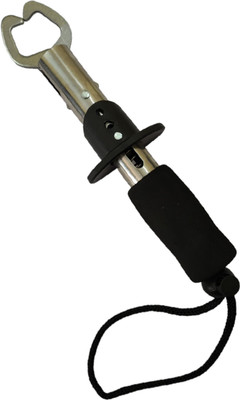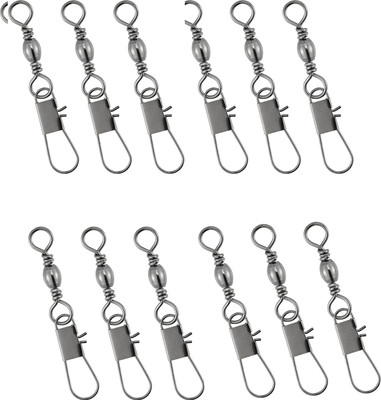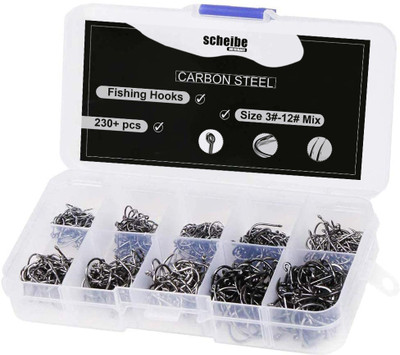
Vinayakart Soft Bait Silicone Fishing Lure (Pack of 3)
Share
Vinayakart Soft Bait Silicone Fishing Lure (Pack of 3)
3.7
244 Ratings & 7 Reviews₹290
₹999
70% off
Available offers
T&C
T&C
T&C
T&C
Warranty
NA
Delivery
Check
Enter pincode
Delivery by13 Aug, Wednesday
?
if ordered before 6:59 AM
View Details
Services
- NA
- Cash on Delivery available?
Seller
Description
Body Shape and Size:
Shape: Frog lures generally have a body shape that resembles a real frog, including a rounded or somewhat elongated form.
Size: They come in various sizes, usually ranging from 2 to 4 inches, to match the size of frogs found in different water bodies.
Color Patterns:
Realistic Colors: Many frog lures feature colors and patterns that mimic real frogs, such as green, brown, and black, often with spots or stripes.
Bright Colors: Some lures use bright colors like chartreuse or orange to increase visibility in murky water or low light conditions.
Hooks:
Hidden or Semi-Hidden Hooks: Frog lures typically have hooks that are either embedded in the body or designed to be weedless. This prevents the lure from snagging on vegetation.
Hook Size: Hooks are generally larger, often ranging from 2/0 to 5/0, to handle larger predatory fish.
Legs/Tails:
Soft Plastic Legs/Tails: Many frog lures have soft plastic legs or tails that create a kicking or splashing action as the lure is retrieved, simulating a frog’s movement.
Eyes:
Realistic Eyes: Some frog lures are equipped with painted or 3D eyes to enhance realism and attract fish.
Material:
Soft Plastics: Most frog lures are made from soft, flexible plastics that can compress and move realistically in the water.
Foam or Hard Plastic: Some are constructed from foam or hard plastic for durability and different movement characteristics.
How It Works:
Surface Action: Frog lures are designed to be used on the surface of the water. Their movement, including splashing, kicking, and wobbling, mimics the action of a real frog, attracting fish that are looking for easy prey.
Weedless Design: The weedless design allows the lure to move through thick vegetation without getting snagged, making it ideal for fishing in weedy or lily pad-covered waters.
Retrieval Techniques: Techniques such as “walking the dog,” popping, and slow retrieval can be used to create different actions and trigger strikes from fish.
Applications:
Target Species: Frog lures are particularly effective for bass, pike, and muskie, but can also attract other predatory fish.
Fishing Conditions: Best used in weedy, vegetated, or shallow waters where fish are likely to ambush prey from cover.
Read More
Specifications
In The Box
| Pack of |
|
General
| Brand |
|
| Model Number |
|
| Type |
|
| Design |
|
| Material |
|
| Suitable For |
|
| Number of Treble Hooks |
|
| Maximum Diving Depth |
|
| Model Name |
|
| Color |
|
| Hook Type |
|
| Net Quantity |
|
| Key Features |
|
Additional Features
| Other Features |
|
Dimensions
| Hook Size |
|
| Lure Length |
|
Warranty
| Warranty Summary |
|
| Service Type |
|
| Covered in Warranty |
|
| Not Covered in Warranty |
|
Ratings & Reviews
3.7
★
244 Ratings &
7 Reviews
- 5★
- 4★
- 3★
- 2★
- 1★
- 115
- 31
- 35
- 32
- 31
3
Nice
Normal condition
READ MOREIrshadkhan Pathan
Certified Buyer, Hinganghat Industrial Area
4 months ago
4
0
Report Abuse
5
Must buy!
Greater than i thought, with hollow body❤️. I really love it. Appreciate the quality.The yellow frog is more attractive to fish. And i got a huge on
READ MOREFlipkart Customer
Certified Buyer, Malappuram District
3 months ago
4
0
Report Abuse
5
Simply awesome
Nice product
READ MOREVishal Vishal
Certified Buyer, Pathankot
4 days ago
0
0
Report Abuse
5
Perfect product!
Good 👍
READ MOREKarupu Black
Certified Buyer, Ariyalur District
18 days ago
0
0
Report Abuse
2
Moderate
West quality,,, in price,,,
Low quality,,,
READ MORELow quality,,,
Kashiram sardar Kashi
Certified Buyer, Kolkata
2 months ago
0
0
Report Abuse
+
All 7 reviews
Questions and Answers
Q:Weight how much
A:1pcs 12gram.
Vinayakart
Flipkart Seller4
0
Report Abuse
Q:It is how many frog
A:3 pcs
Vinayakart
Flipkart Seller4
1
Report Abuse
Q:What size in cm
A:6cm
Vinayakart
Flipkart Seller3
0
Report Abuse
Didn't get the right answer you were looking for
Safe and Secure Payments.Easy returns.100% Authentic products.
Back to top











